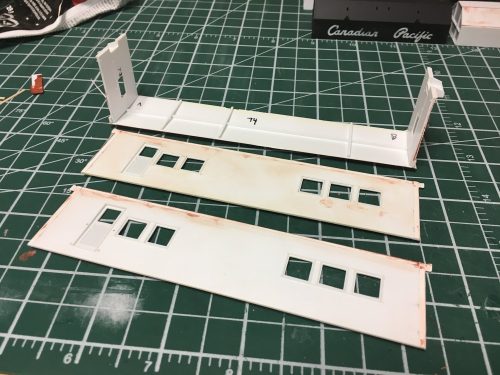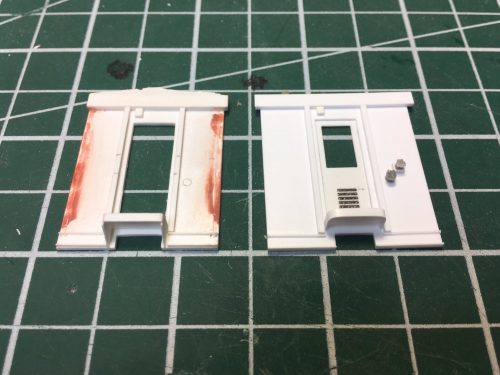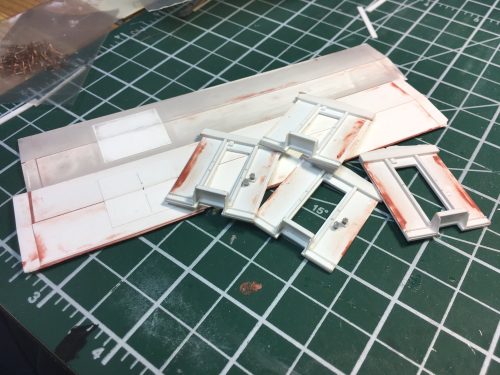Sometimes a project takes a step back before going forward. It can be easy and natural to only share successes, but mistakes are also a source of learning.
The Algoma Central’s quartet of home built steam generator cars were built in 1951-52 using the frames of old 40’ steel braced wood boxcars. These wood boxcars were a pretty good match for the Accurail car and I have a trio of these decorated for the AC using CDS transfers. In building these scratchbuilt heater cars, I built them to fit the same Accurail 40’ boxcar underframe, since the real cars were built on the same boxcar frames.
Except…
With the .040” styrene walls of the scratchbuilt body married to the Accurail frame the overall width of the new body was only equal to the width of the wooden sheathing of the original box and did not take the width of the car bracing which would have been attached to the outside of this. The original scratchbuild was FAR TOO NARROW and at least a foot or more narrower than the other passenger cars they will run with.
This major error has really bothered me, as while otherwise the cars built up quite nicely so far, the too thin bodies can’t be unnoticed. So being unhappy with its current state, the project was shoved off to the side for a while.
This past week I pulled the cars from the back of the workbench and resolved to correct the mistake and move forward on the project again. The sides turned out well and I didn’t want to throw the entire project out and re do that effort, so the ends and roof were cut away and the corner trimwork removed with a razor blade. A few minor pieces such as the doors and aftermarket detail parts for the electrical plugs were removed from the original ends and salvaged for reuse. New, wider versions of the ends were fabricated and reassembly of the cars is now well on its way.
New underframes will have to be scratchbuilt next, and then hopefully I can continue with fabricating the roof vents and other details for the generator, which I had started but put aside when it became obvious I didn’t want to continue with the original bodies.
More to come hopefully, now that this project is rolling again…






